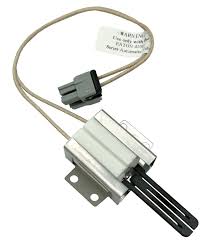
How to Replace a Stove Igniter for Reliable Gas Burner Performance
Share
A faulty stove igniter can cause inconsistent burner performance, making it difficult to cook efficiently. If your gas burner clicks without igniting or takes too long to light, the igniter might be worn out. Replacing a stove igniter is a straightforward task that can restore reliable operation. Follow this step-by-step guide to safely replace your igniter.
Tools and Materials Needed
- Replacement igniter (specific to your stove model)
- Screwdriver (Phillips or flathead)
- Nut driver (if required)
- Adjustable wrench
- Wire connectors (if necessary)
- Work gloves
- Safety goggles
Step 1: Ensure Safety First
Before starting the replacement, disconnect the stove from power and turn off the gas supply. This prevents any risk of electrical shock or gas leaks.
Step 2: Remove the Burner Grates and Caps
Take off the burner grates and lift the burner caps. Set them aside carefully to avoid damage.
Step 3: Access the Igniter
Use a screwdriver or nut driver to remove the screws securing the burner base. Lift off the base to expose the igniter and wiring.
Step 4: Disconnect the Old Igniter
Locate the igniter, which is usually held by a small bracket. Carefully disconnect the wires, either by unplugging them or cutting and using wire connectors for the new igniter. Remove the mounting screws and take out the old igniter.
Step 5: Install the New Igniter
Position the replacement igniter in place, securing it with screws. Reconnect the wires exactly as they were on the old igniter. If using wire connectors, ensure they are tightly secured to prevent loose connections.
Step 6: Reassemble the Burner Components
Place the burner base back into position and secure it with screws. Return the burner cap and grate to their original places.
Step 7: Restore Power and Gas Supply
Reconnect the stove to power and turn the gas supply back on.
Step 8: Test the New Igniter
Turn the burner knob to ignite the flame. The burner should light quickly and consistently. If it doesn’t, double-check the connections and make sure the igniter is properly positioned.
Final Tips for Longevity
- Clean burner components regularly to prevent debris buildup.
- Avoid slamming pots on the stove, which could damage the igniter.
- Replace igniters promptly if they show signs of wear.
By following these steps, you can ensure reliable gas burner performance and extend the life of your stove.
